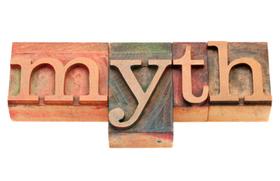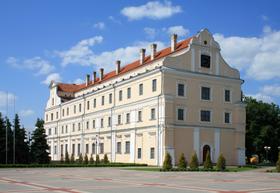Any school is a lot of work and takes a lot of money to open and continue operating. So, when you look at the examples of these five founders of legendary boarding schools, you can only marvel at the sheer determination that each one had to make his or her dream come true. American boarding schools are some of the best in the world. In an age when everybody seems to be taking shots at America and what we stand for, that's an excellent statement to be able to make. Here, then, are snapshots of the founders of five boarding schools. They are an inspiration forever, as indeed are all the founders of boarding schools throughout the United States.
Maria Bissell Hotchkiss and The Hotchkiss School
Founded in 1891
Number of students: 598
Grades 9-12, PG. Coeducational
Religious Affiliation: Nondenominational
Setting: Rural
Maria Bissell Hotchkiss had inherited a fortune from her husband Benjamin Hotchkiss. He made his money manufacturing guns. After he died, Mrs. Hotchkiss donated 65 acres to establish a school for boys. She wanted the school to be a feeder school for Yale University near New Haven's shore. Her original gift of 65 acres expanded over time into a magnificent campus of 645 acres of pristine Northwestern Connecticut countryside. Mrs. Hotchkiss' munificence also established a generous financial aid program that allowed boys who could not otherwise afford to attend The Hotchkiss School. The school became a coeducational institution in 1971.
Reverend Frederick Herbert Sill and Kent School
Founded in 1906
Number of students: 570
Grades 9-12, PG. Coeducational
Religious Affiliation: Episcopal
Setting: Rural
The Reverend Frederick Herbert Sill was an Episcopal monk and a member of the Order of the Holy Cross. He established Kent School in rural Kent, Connecticut 1906 as a school for boys from families of modest means. Boarding schools at that time were places where boys from wealthy American families went to school. Father Sill, or Pater as he was called affectionately, was adamant that all his boys would learn the value of hard work, academic and otherwise. To this day, students have chores as part of their daily routine at Kent. His influence as an educator and leader was profound and led to establishing at least one other school, South Kent School.
George Cheyne Shattuck and Saint Paul's School
Founded in 1856
Number of students: 541
Grades 9-12. Coeducational
Religious Affiliation: Episcopal
Setting: Rural
Dr. George Cheyne Shattuck wanted his sons to attend school in the country. Indeed, in 1856, his country home in New Hampshire became the first home of what is now Saint Paul's School. The first headmaster was The Reverend Henry Coit, who ran St. Paul's until 1895. The school is situated on 2,000 bucolic New Hampshire acres. The school became a coeducational school in 1971. It is now one of six boarding schools in the U.S., and it can claim to be 100% residential.
Horace Dutton Taft and The Taft School
Founded in 1890
Number of students: 594
Grades 9-12, PG. Coeducational
Religious Affiliation: Non-denominational
Setting: Small town
Horace Dutton Taft was the brother of the 27th President of the United States. Taft was the second school he started, the other being a prep school for boys in Pelham Manor, New York. Mr. Taft's School in Watertown occupied a great barn of a Victorian home. (One can only imagine how cold and drafty those long Litchfield County winter days and nights must have been for the boys.) Horace Taft believed in educating the whole child long before such an approach was fashionable. Over the years, Taft School evolved with the times, admitting girls in the 1970s and making its superb education available to as wide a pool of candidates as possible while remaining true to the ideals its first headmaster both posited and embodied.
Lucy Madeira Wing and The Madeira School
Founded in 1906
Number of students: 308
Grades 9-12, PG. Girls
Religious Affiliation: Non-denominational
Setting: Suburban
According to Time Magazine's 1948 profile of Lucy Madeira Wing, she started her school to make money. One suspects that the truculent Miss Madeira was probably poking fun at society and the economic royalists she so avidly despised. Madeira is one of the nation's top boarding schools. And it has become so largely because of Miss Madeira's insistence on her students disciplining their minds back when she ran the school. That noble tradition of academic discipline and character-building continues to this day.
Resources
- 5 More Founders and the Schools Their Gifts Established
- 5 More Schools and Their Founders
- Boarding Schools in a Minute
Questions? Contact us on Facebook. @boardingschoolreview
















































